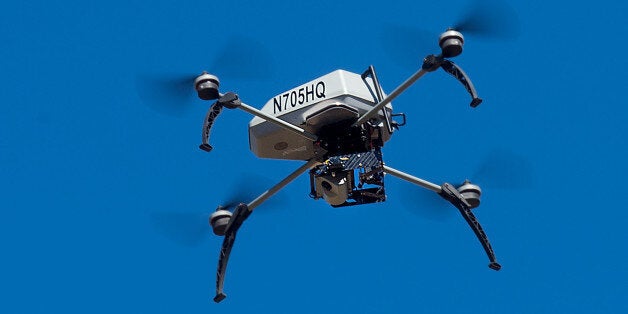
Since emerging onto the technology and gadgets scene a few years ago, drones aimed at the consumer market have become increasingly popular. Unfortunately, as their popularity has grown, so has the number of safety reports filed by pilots having close encounters with drones. There are rules in place, but they're not always followed.
Drones are also rapidly becoming essential pieces of kit for professional use - we need only witness the rise of photographers using them for weddings and sports reportage to name but two examples to demonstrate this. Beyond photography, we also see a huge potential for drones in industrial use - traffic monitoring, healthcare/first aid, deliveries and logistics, and agriculture are among many sectors already looking at, and trialling, drone usage. The opportunity is huge - earlier this year, PwC put an estimate of the global commercial application of drones to be $127bn in the very near future.
None of this potential will be possible however, if early adopters risk creating a negative perception of the devices through irresponsible and dangerous use. We need to instil a sense of responsibility, ownership, and safe usage without losing the fun element for those flying drones as a hobby.
The Civil Aviation Authority (CAA)'s Dronecode, a simple guide to safe use, is in place for this very reason. The rules are straightforward: don't fly near airports; remember to keep your drone in sight (realistically stay below 400ft); observe your drone at all times; never fly near aircraft; and enjoy responsibly. Neatly encapsulated in a DRONE mnemonic.
This code forms the basis of establishing a responsible attitude toward drone flight and usage among consumers. This is so safe drone flying is encouraged, to protect the safety of the wider aviation industry, and the wider sector opportunities (mainly through commercial potential), not be stunted by extra legislation brought about by reckless, risky use early on.
In order to maintain high levels of aviation safety and safeguard the future of the drone industry and the plethora of sectors which may soon rely upon them, the CAA has also undertaken ground-breaking research to understand behaviours, perceptions, and awareness among the public - research which will be published later this year. What this reveals will allow the aviation industry as a whole to act together, under the same direction, to ensure a strong, robust future for drones and ensure everyone wins.
Currently, drones sit on the 'early adopter' scale - especially at the larger end of the market where they will set you back the best part of £500 or more; an expensive toy with which to be reckless. However, as with all technology, Moore's Law will no doubt come into force, and devices will become more agile, more powerful, and more accessible to those with a smaller pocket.
This will bring them into more homes (and gardens), and we need to establish a common, if not intrinsic, understanding on their safe use as part and parcel of ownership. In doing so, those who have them as a hobby can enjoy them, while the industries which will rely on them for innovative deployments currently impossible through other devices will be able to flourish. It's in everyone's interest to enjoy them and have fun, but to do so safely. Responsibility and fun shouldn't be mutually exclusive.